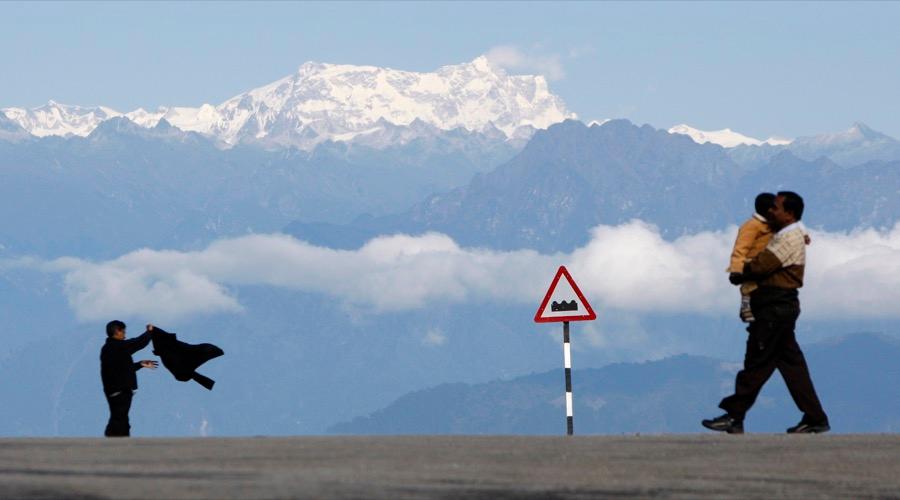Himalayan glaciers are granted ‘rights of human beings’ for protection
A man with a child walks in front of the Gankar Punsun glacier at Dochula in Bhutan.
An Indian court has recognized Himalayan glaciers, lakes and forests as "legal persons" in an effort to curb environmental destruction, weeks after it granted similar status to the country's two most sacred rivers.
In a decision that aims to widen environmental protections in the mountainous region, the court granted the legal standing to glaciers Gangotri and Yamunotri that feed India's venerated Ganga and Yamuna rivers, which won the status in a landmark judgement in March.
"The rights of these entities shall be equivalent to the rights of human beings and any injury or harm caused to these bodies shall be treated as injury or harm caused to human beings," the highest court in Himalayan state of Uttarakhand said in its ruling on Friday.
It said Yamunotri glacier, which is the source for Yamuna river was shrinking at an alarming rate.
Gangotri, which feeds the river Ganga and is one of the largest glaciers in the Himalayas, is also "receding fast," the court said.
"In over 25 years, it has retreated more than 850 meters [2,800 feet]," a two-judge bench of justices Rajeev Sharma and Alok Singh said.
The court also extended the status of "living entity" to swathes of the Himalayan environment, including waterfalls, meadows, lakes and forests.
On March 20, the same court ordered that both Ganges and Yamuna rivers should be given "living entity" status to conserve them, in a decision cautiously welcomed by activists who expressed hope that it would signify more than just a symbolic gesture.
Both rivers are considered holy by millions of Hindus, who ritualistically bathe, drink and scatter the ashes of their dead in the water.
The rivers that crisscross most of the country before flowing into the sea have witnessed massive pollution near human habitations mainly due to dumping of untreated sewage and industrial waste.
The court argued the unusual step was necessary because the hallowed rivers upon which Hindu rites are conducted were "losing their very existence."
New Zealand earlier last month recognized its third-largest river, ancestral and spiritual waters for its Maori people, as a living entity.
Successive governments in India have attempted with limited success to clean up the Ganges, which snakes 1,553 miles across northern India from the Himalayas to the Bay of Bengal.
Our coverage reaches millions each week, but only a small fraction of listeners contribute to sustain our program. We still need 224 more people to donate $100 or $10/monthly to unlock our $67,000 match. Will you help us get there today?
